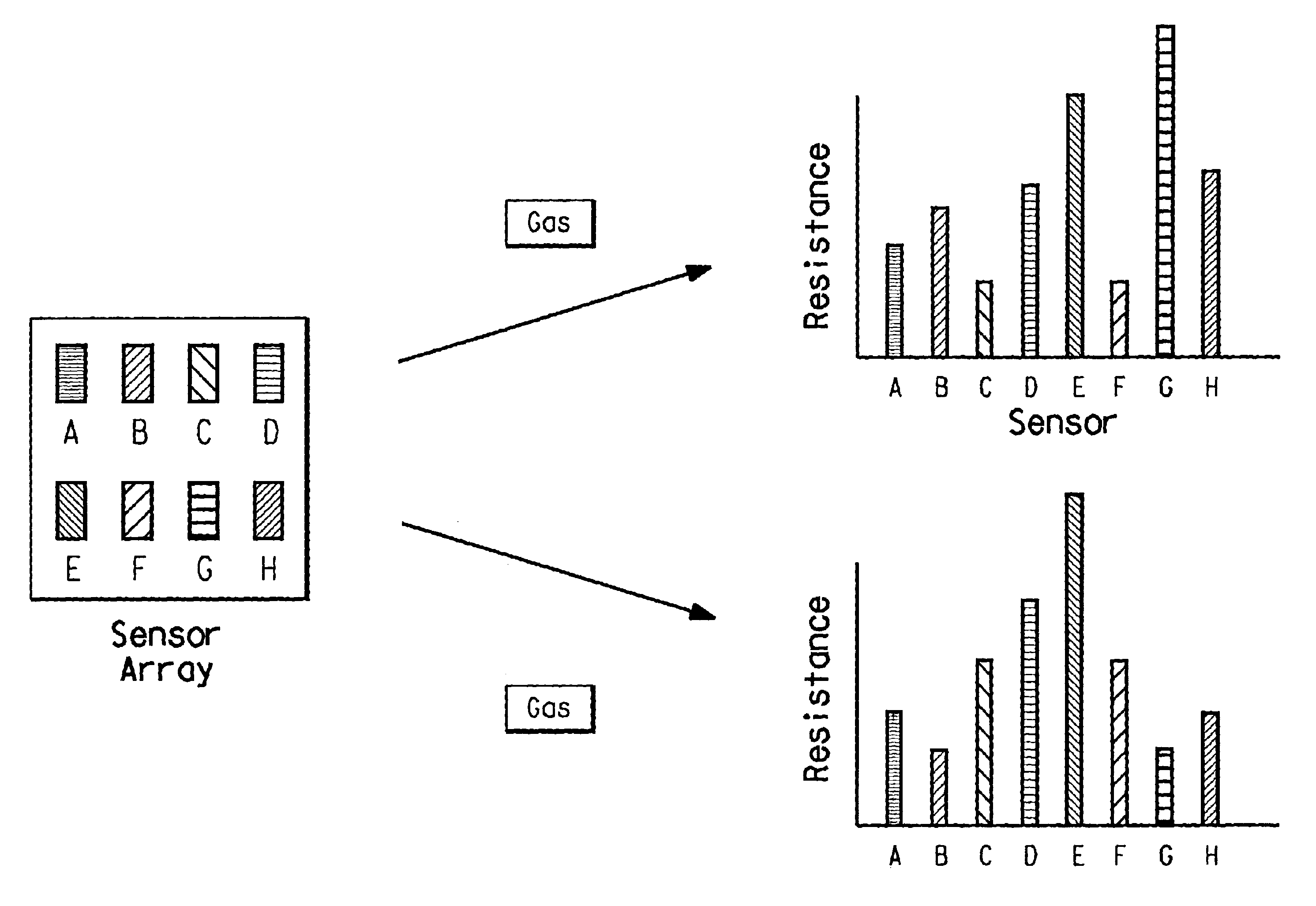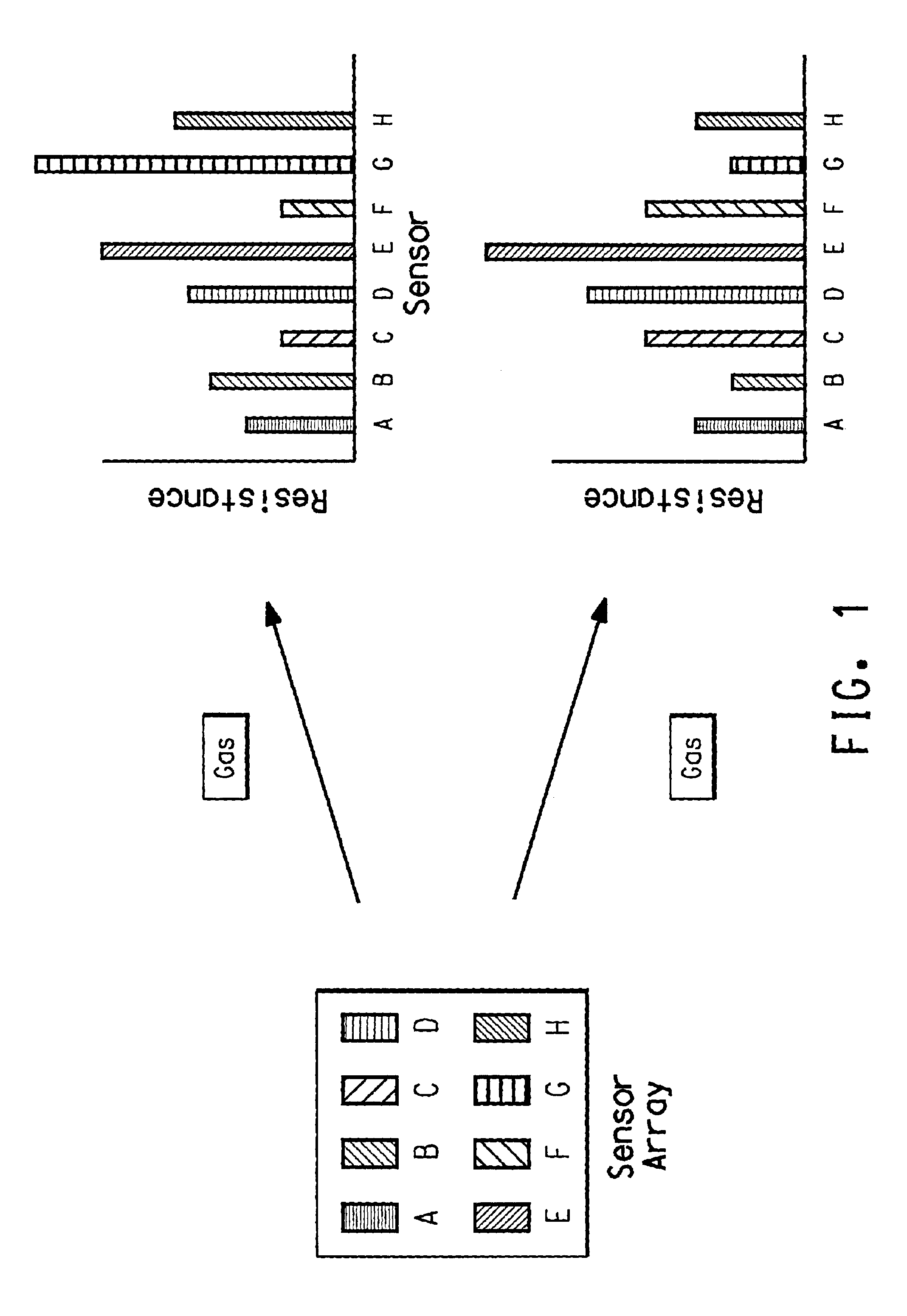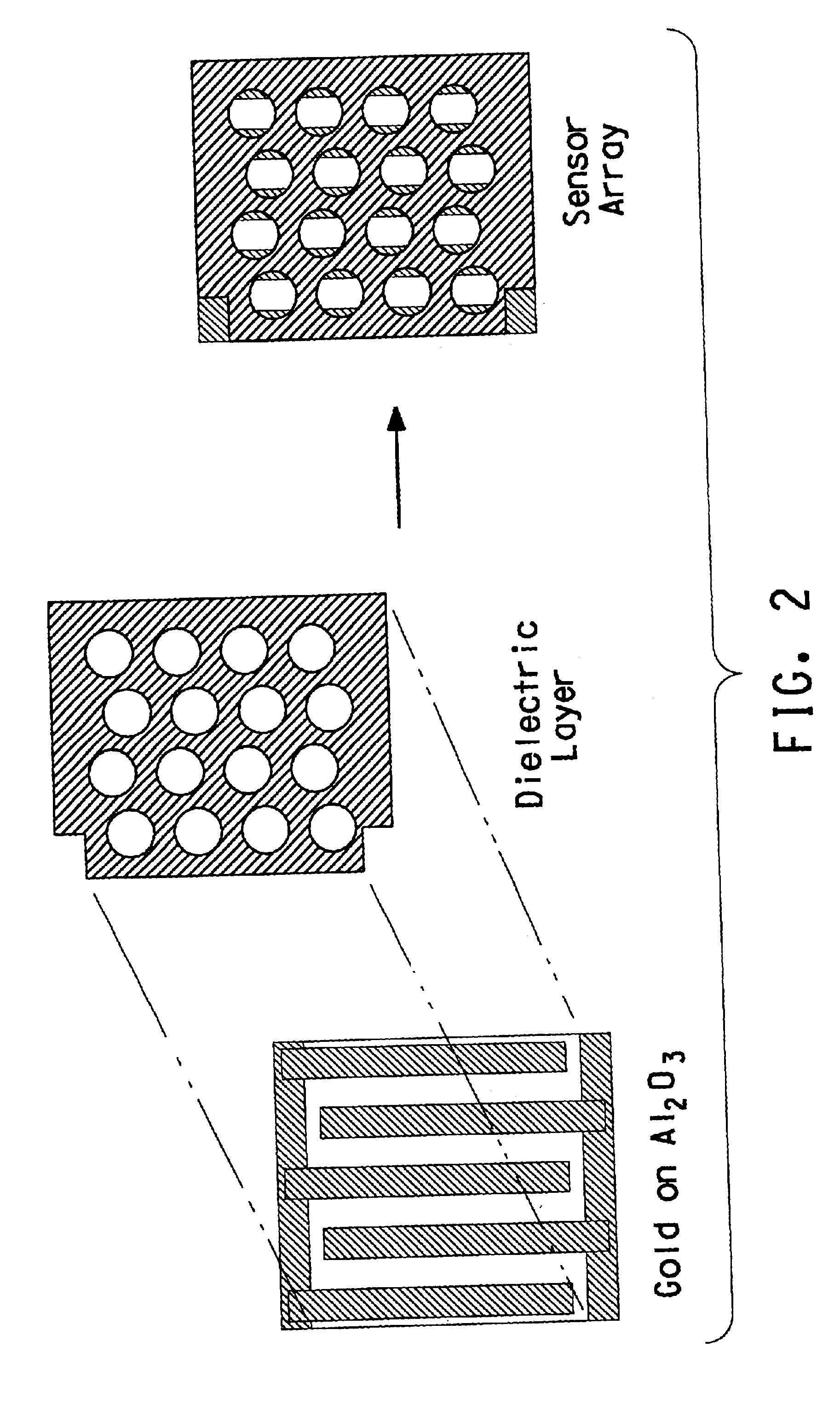Method and apparatus for analyzing mixtures of gases
a technology of mixtures and gas, applied in calibration apparatus, instruments, specific gravity measurement, etc., can solve the problems of difficulty in using one material to detect a specific gas, prior art methods that do not currently meet this need, and operating temperature can alter or impair the performance of the sensor array
- Summary
- Abstract
- Description
- Claims
- Application Information
AI Technical Summary
Benefits of technology
Problems solved by technology
Method used
Image
Examples
example 1
This example shows the change in the electrical properties of 20 metal oxide semiconducting materials in the presence of 4 combustion gas compositions at 450° C. The signals listed in Table 1 below are from the infrared thermographic technique described above. The signals represent differences in temperature (° C.) of the materials when exposed to one of the 4 gas compositions shown relative to that in a comparison gas which is 2% O2 / 98% N2 and reflect the change in the electrical resistance of the semiconducting materials. All of the signals were generated with 10 V across the materials, unless otherwise specified. Blank spaces indicate that there was no detectable signal when that gas composition was contacted with that material. Unless otherwise specified, the gases were measured at 2000 ppm in N2.
TABLE 1Change in temperature in ° C.ZnOSnO2NiFe2O4WO31% Nb:TiO2Pr6O11SrNb2O6NiOCuOCu2OMnTiO3BaCuO2.5NO2 in N2−38.1−35.4−27.4−16.4−2.7−5.6−2.85.58.28.25.66.6NO2 in 2%−35.2−32.5−13.7−13.5...
example 2
This example shows the change in the electrical properties of 8 metal oxide semiconducting materials in the presence of 5 combustion gas compositions at 450° C. The signals listed in Table 2 below are from the infrared thermographic technique. The signals are differences in temperature (°C.) of the semiconducting materials when exposed to the gas compositions shown relative to that in a comparison gas which is 2% O2 / 98% N2. All of the signals were generated with 10 V across the semiconducting materials, unless otherwise specified. Blank spaces indicate that there was no detectable signal when that gas composition was contacted with that material. Unless otherwise specified, the gases were measured at 2000 ppm in N2.
TABLE 2Change in temperature in ° C.ZnOSnO2WO3SrNb2O6NiOCuOCu2OAlVO4NO2 in−38.1−35.4−16.4−2.85.58.28.2—N2NO2 in−35.2−32.5−13.5—5.55.65.5−2.72%O2 / 98%N2CO in27.28.213.78.3−5.5−13.811.3N2N2 ref.16.99.65.6—−2.8−5.6−2.88.31%382822—−6−7−1111C4H10 / 99% N2
example 3
This example shows the change in the electrical properties of 26 metal oxide semiconducting materials in the presence of 4 combustion gas compositions at 600° C. The signals listed in Table 3 immediately below were obtained using an infrared thermographic technique. The signals are measurements of the differences in temperature (° C.) of the materials when exposed to the gas compositions shown relative to that in a comparison gas which is 2% O2 / 98% N2. All of the signals were generated with 10 V across the materials, unless otherwise specified. Blank spaces indicate that there was no detectable signal when that gas composition was contacted with that material. Unless otherwise specified, the gases were measured at 2000 ppm in N2.
TABLE 3Change in temperature in ° C.ZnOSnO2NiFe2O41% Nb:TiO2WO3FeTiO3SrTiO3NiOAlVO4CuOCu2OLaFeO3BaCuO2.5Fe2O3NO2 in N2−54.4−48.3−36.3−24.2−18.1−6.136——————NO2 in 2%−48.3−48.3−30.2−12.1−18.1−6.166−6.166———O2 / 98%N2CO in N228.518.118.542.324.1——−618.1−6−12.1−3−...
PUM
| Property | Measurement | Unit |
|---|---|---|
| temperature | aaaaa | aaaaa |
| temperature | aaaaa | aaaaa |
| operating temperature | aaaaa | aaaaa |
Abstract
Description
Claims
Application Information
 Login to View More
Login to View More - R&D
- Intellectual Property
- Life Sciences
- Materials
- Tech Scout
- Unparalleled Data Quality
- Higher Quality Content
- 60% Fewer Hallucinations
Browse by: Latest US Patents, China's latest patents, Technical Efficacy Thesaurus, Application Domain, Technology Topic, Popular Technical Reports.
© 2025 PatSnap. All rights reserved.Legal|Privacy policy|Modern Slavery Act Transparency Statement|Sitemap|About US| Contact US: help@patsnap.com



